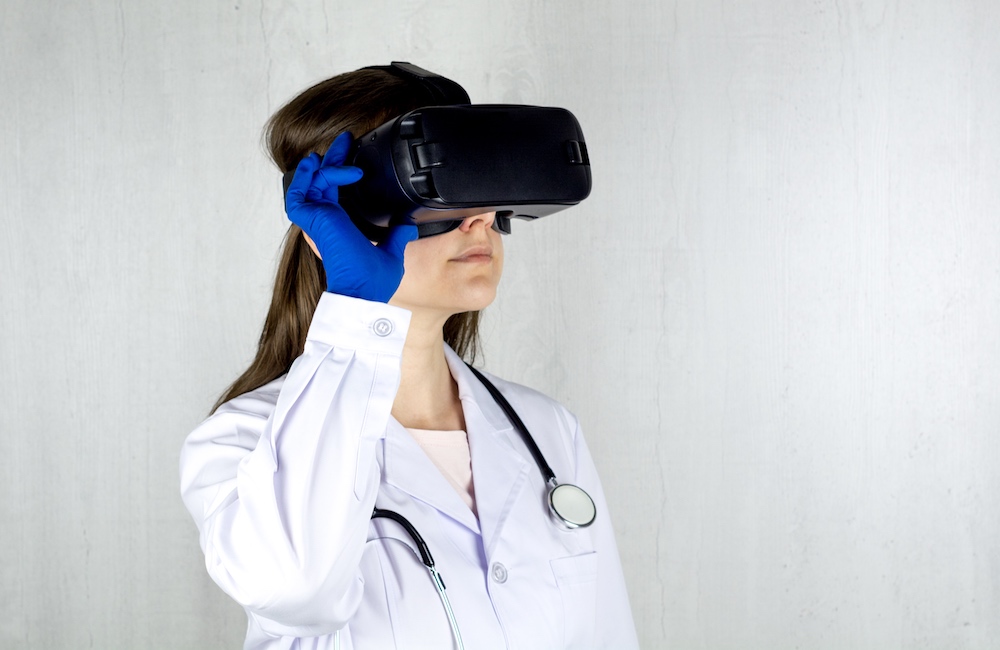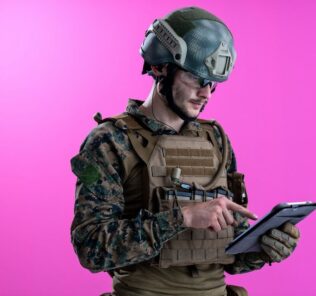Healthcare Simulation Collaboration Establishes Mixed Reality Neonatal Training
As the healthcare simulation industry expands, clinical simulation collaborations and partnerships have helped to expand the scope of practice across healthcare systems, both nationally and globally. Proving this effective, the Hannaford Center for Safety, Innovation and Simulation, The Barbara Bush Children’s Hospital, and MaineHealth Innovation Cohort and Innovation Center joined together to help educate and train medical professionals using healthcare simulation throughout the state of Maine. This collaboration has provided a means for many learners to harness and further advance skills their skills. This article details a HealthySimulation.com interview with the leaders who helped facilitate this particular collaboration.
Beginning the conversation, Mary C. Ottolini, Chair of Pediatrics at the Barbara Bush Children’s Hospital at Maine Medical Center, shared that after joining the BBCW, her team would go out to visit different community hospitals as part of a service line. Together, they were out at a couple of the community hospitals and were hearing concerns from the pediatricians and the nurses that they didn’t have that many babies that needed resuscitation. Yet, when they did, they were in need of more training opportunities to increase overall preparedness.
“At the same time, one of the neonatal neurologists has been doing research and trying to improve outcomes for babies that require resuscitation, because there’s a risk that they could have an anoxic brain injury,” said Ottolini. “She did some background research around the state and found out that babies who require resuscitation outside of the Barbara Bush Children’s Hospital or Eastern Maine Medical Center have up to six times the risk of death or permanent neurologic disability.”
Sponsored Content:
At this point, Ottolini joined forces with Michael Ferguson, MD, a pediatric intensivist at Maine Medical Center, and Leah B. Mallory, MD, a MaineHealth specialist in Pediatrics. Together, with interests in healthcare simulation and education, they began working on a system-wide collaboration. To develop a strategy, they were further joined by Susan Ahern, the Vice President of Innovation for MaineHealth – enabling the team to bring their expansive medical simulation idea to life.
“That’s how we started and the Innovation Center helped us financially and academically on how to go ahead and create this sort of product from the ground up,” explained Ferguson. “Then, between Mary and the Innovation Center, we made a link with Case Western Hospital to help build the prototype.”
Mallory added that, from a healthcare simulation standpoint, when the team contemplated how to help the eight rural hospitals the health system serves, they needed to help them maintain neonatal resuscitation skills. While they knew clinical simulation was a way to accomplish this, they also recognized that to take a healthcare simulation van, a simulation technologist, a curriculum person, a neonatal expert to these hospitals on a regular basis was not practical, feasible, or affordable.
“We had been struggling with how to maintain those skills so that people can respond to the rare emergency where the neonate needs resuscitation. This kind of innovation and potentially augmented reality technology could make that more affordable. Once a year we could go out with the whole healthcare simulation team, do a big education day, and they could then do refresher training using the innovative technology to keep their skills up.”
Sponsored Content:
Ottolini added that when they started the pilot program using standard high-fidelity manikins at one of their rural hospitals, Franklin Hospital, they found that it dramatically improved the resuscitation skills of the resuscitation teams there. Their thought was that, just like any other skill, learners need to continue to do deliberate practice with their team in order to maintain the highest degree of readiness for whatever procedure they were trying to complete.
“Our goal is to make the outcomes for babies throughout Maine as good as they are here at the Barbara Bush Children’s Hospital. Your future should not be determined by your zip code if you’re in need of resuscitation,” stressed Ottolini.
“I’ve worked with Leah since I got here six and a half years ago, and we both are probably a little bit obsessed with healthcare simulation,” Ferguson added. “Many studies have shown the cost of it, but the sort of basic tenant costs about a quarter of a million dollars to get the most basic simulation lab up and running. Since more than 90% of the hospitals in the country are small and rural, or at least small suburban ones, they cannot afford a million dollars just to drop by a simulation center.”
Additionally, Ferguson shared that this collaboration can potentially allow his team to get a clinical simulation lab in a suitcase and have the lab live in the small, rural hospitals. Then, he and his team can actually run the simulation in any of the rural hospitals from the Center. He believes the real advantage of this is that the technology doesn’t require that quarter of a million-dollar setup, but rather can be completed on the side of a road.
From the Maine Health perspective, according to Ahern, the big picture is really to achieve is to create the healthiest communities in America. With Maine Health Innovation, she believes they are leveraging the insights of the care team members who are the experts in care. This is helping them bring their ideas to life by making connections, education, and funding opportunities.
“I’m not expecting mixed reality to replace in-person instruction at this point, but what I’m expecting it to do is open up healthcare simulation to areas that have never experienced it before,” Ferguson explained.
More About the Hannaford Center for Safety, Innovation, and Simulation: The Hannaford Center for Safety, Innovation, and Simulation at Maine Medical Center offers high-tech and realistic simulation, allowing medical students, residents, and medical staff to learn new techniques and enhance their skills through repeated practice and review. More importantly, the work that goes on in this Center and the learning that is achieved ultimately has an impact on the quality of care and patient safety that the facility provides to those who choose Maine Medical Center and our partners for treatment.
More About Maine Health Innovation: MaineHealth Innovation aims to foster a culture of innovation. At MaineHealth, the definition of Innovation is a novel idea that solves an unmet care need through new care team models, products, or services. Multi-disciplinary collaboration is key and pivoting is part of the game. Solving problems creatively provides an opportunity to have fun and work better together.
More About the Barbara Bush Children’s Hospital: BBCH is a non-profit organization benefiting from generous community support. From routine check-ups and immunizations to the treatment of life-threatening illnesses and injuries, the BBCH provides comprehensive, family-centered healthcare for all of northern New England. With 116 beds, including 31 Level III NICU Beds, 20 Level II Continuing Care Nursery beds, and 8 PICU beds, it is Maine’s premier referral hospital, offering services not available elsewhere in the state.
Learn More About Augmented Reality in Medicine
Lance Baily, BA, EMT-B, is the Founder & CEO of HealthySimulation.com, which he started while serving as the Director of the Nevada System of Higher Education’s Clinical Simulation Center of Las Vegas back in 2010. Lance is also the Founder and acting Advisor to the Board of SimGHOSTS.org, the world’s only non-profit organization dedicated to supporting professionals operating healthcare simulation technologies. His co-edited Book: “Comprehensive Healthcare Simulation: Operations, Technology, and Innovative Practice” is cited as a key source for professional certification in the industry. Lance’s background also includes serving as a Simulation Technology Specialist for the LA Community College District, EMS fire fighting, Hollywood movie production, rescue diving, and global travel. He and his wife Abigail Baily, PhD live in Las Vegas, Nevada with their two amazing daughters.
Sponsored Content:





















